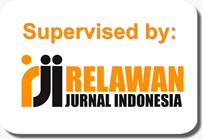A PERFORMANCE MEASUREMENT IN THE FRAMEWORK OF THE BALANCED SCORECARD: ITS IMPLEMENTATION AT THE PUBLIC SECTOR
Abstract
This study aimed to reveal the essence of the uniqueness of the balanced scorecard practice in the public sector based on its dynamics and characteristics. This qualitative research utilized a case study model combining literacy, data processing, in-depth interviews, and the researchers’ involvement. The results of the study indicate that the balanced scorecard can be adapted to an organization's vision and mission. Meanwhile, the customer perspective can be further divided into several perspectives, such as service partners and the stakeholder perspective, which became the ultimate goal of services. However, the financial aspect remained important and relevant for the object of the study even though it was not developed into a financial perspective independently. Instead, this aspect is included as a strategic objective from the perspective of learning and growth. In addition, the sharpening of the Key Performance Indicators (KPI) is also carried out after the results of the KPI achievement are measured and evaluated.
Keywords: Performance Measurement, Balanced Scorecard, Key Performance Indicators, Public Sector.
Full Text:
PDFReferences
Averson, P. (2003). A Balanced Scorecard for City and County Services. Balanced Scorecard Institute.
Cahyono, Dwi. (2000). Pengukuran kinerja balanced scorecard untuk organisasi sektor publik. Jurnal Bisnis dan Akuntansi. Vol. 2 No. 3. DOI: https://doi.org/10.34208/jba.v2i3.496.
Chavan, Meena. (2009). The balanced scorecard: A new challenge. Journal of Management Development. Vol. 28 No. 5. DOI:10.1108/02621710910955930.
Dharmayuni, Lita dan Benny Khairuddin. (2021). Balanced Scorecard Sebagai Model Terintegrasi yang Diterapkan pada Sektor Publik di Indonesia: Studi Kasus: Kementerian Kelautan dan Perikanan RI. Jurnal Ilmiah Manajemen Sumber Daya Manusia (JENIUS). Vol. 4 No. 3.
Gasperz, V. (2006). Sistem Manajemen Kinerja Terintegrasi: Balances Scorecard dengan Six Sigma untuk Organisasi Bisnis dan Pemerintah. Jakarta: PT Gramedia Pustaka Utama.
Kaplan, Robert S. & David P. Norton. (1996). The Balanced Scorecard: Translating Strategy into Action. Boston, Massachusetts: Harvard Business School Press.
Kaplan, Robert S. & David P. Norton. (1992). The Balanced Scorecard – Measures That Drive Performance. Retrieved from: https://steinbeis-bi.de/images/artikel/hbr_1992.pdf.
Kementerian Keuangan. (2018). Kontrak Kinerja Direktorat Evaluasi, Akuntansi dan Setelmen Tahun 2018. Jakarta: Direktorat Jenderal Pengelolaan Pembiayaan dan Risiko.
Kementerian Keuangan. (2019). Laporan Kinerja Direktorat Evaluasi, Akuntansi, dan Setelmen Tahun 2018. Jakarta: Direktorat Jenderal Pengelolaan Pembiayaan dan Risiko.
Kementerian Keuangan. (2019). Laporan Kinerja Direktorat Jenderal Pengelolaan Pembiayaan dan Risiko Tahun 2018. Jakarta: Direktorat Jenderal Pengelolaan Pembiayaan dan Risiko.
Madsen, Dag Øivind, Blerim Azizi, Albert Rushiti, dan Tonny Stenheim. (2019). The diffusion and implementation of the balanced scorecard in the norwegian municipality sector: a descriptive analysis. Social Science. 8, 152. DOI:10.3390/socsci8050152.
Miles, Matthew B. and A. Michael Huberman. (2007). Qualitative Data Analysis (terjemahan), Jakarta: UI Press.
Niven, Paul R. (2003). Balanced Scorecard Step by Step for Governmental and Nonprofit Agencies. New York: John Wiley & Sons, Inc.
Nor, Wahyudin. (2012). Penerapan balanced scorecard pada pemerintah daerah. Jurnal Akuntansi & Bisnis (AUDI). Vol. 7 No. 2.
Pranasari, Melati Ayuning dan Suci Emilia Fitri. (2020). The implementation of restructuring program and activities based on the money follow program in regions. Jurnal Tata Kelola & Akuntabilitas Keuangan Negara. Vol. 6 No. 2.
Rahardjo, Mudjia. (2010). Triangulasi Dalam Penilaian Kualitatif. Retrieved from http://mudjiarahardjo.uin-malang.ac.id/materi-kuliah/270-triangulasi-dalam-penelitian-kualitatif.html.
Soebroto, Sunu. (2010). Tesis: Evaluasi Atas Penerapan Balanced Scorecard pada Inspektorat Jenderal Kementerian Keuangan. Retrieved from http://lib.ui.ac.id/file?file=digital/136479-T%2028302-Evaluasi%20atas-full%20text.pdf.
Sulistyo, Budi, Riandi Aditia Darmayana, Musli Mohammad, Rasidi Ibrahim. (2020). Key performance indicators of indonesia state-owned enterprise - a model using bsc and bef. International Journal of Integrated Engineering. Vol. 12 No. 3.
Syahdan, Saifhul Anuar, RR Siti Munawaroh, dan Hj. Masithah Akbar. (2018). Balance scorecard implementation in public sector organization, a problem? International Journal of Accounting, Finance, and Economics. Vol 1, No 1 (2018).
Utomo, St. Dwiarso, Zaky Mahmuddah, dan Yulita Setiawanta. (2016). Balanced scorecard: pentingnya perspektif proses bisnis internal studi empiris di ponpes. Jurnal Akuntansi Indonesia. Vol. 5 No. 2.
Zastempowski, Maciej. (2015). Managing public organizations in theory and practice. Publisher: Wydawnictwo Uniwersytetu Warmińsko-Mazurskiego.
DOI: https://doi.org/10.31846/jae.v12i1.681
Refbacks
- There are currently no refbacks.

This work is licensed under a Creative Commons Attribution-NonCommercial-NoDerivatives 4.0 International License.
e-Jurnal Apresiasi Ekonnomi Indexed by:












